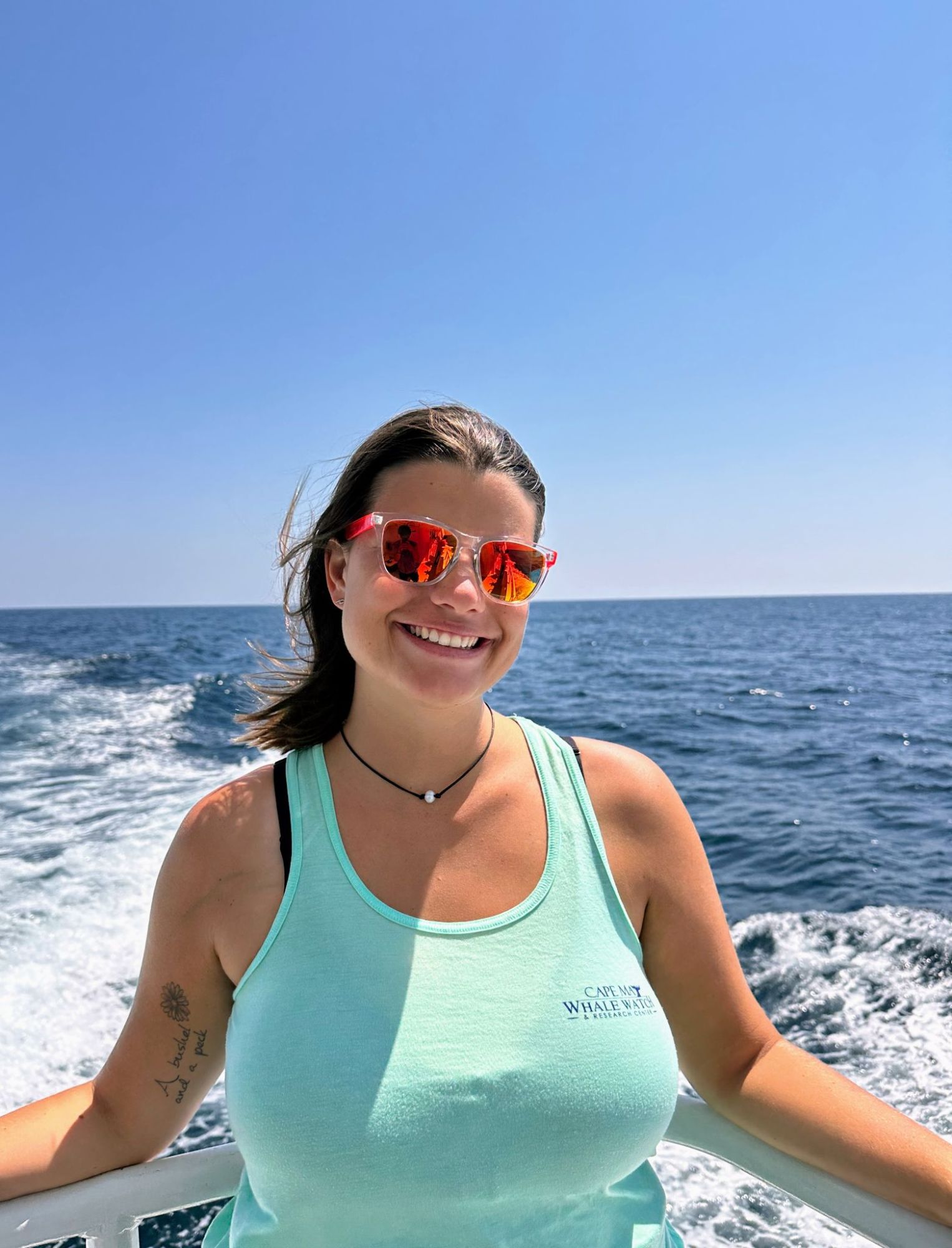A Day in the Life: Research Intern on the American Star

9:30 am
I arrived at South Jersey Marina and boarded our vessel, the American Star. I headed to the wheelhouse where I primarily work of as a research intern. I took out the clipboard with a new data sheet and prepared the information for today’s trip. I grabbed the GPS and set it alongside the camera bag on the table. I created a folder on the computer where all the data collected from the three trips today will be saved to. I then gathered the live Horseshoe crabs for the touch tank (SCP: 2023-1856).
10am
After backing out of the marina, we headed towards the Cape May, or Cold Spring, inlet where we entered the Atlantic Ocean. At this time, I turned on the GPS to start tracking our location for the duration of our trip while searching for marine mammals.
10:34am
Our first marine mammal sighting, the Atlantic Bottlenose dolphin, right outside the inlet! I started the sighting on the data sheet and recorded the time sensitive information like the start time, GPS waypoints, and water parameters found in the wheelhouse or given from the captain. I headed outside the wheelhouse with the camera and started taking as many photos as I can take of the dolphin’s dorsal fin. At the end of the sighting, I record the time sensitive information like the end time, GPS waypoints, any all behavioral data. The American Star continued South heading towards Cape May Point Lighthouse.
11:06am
We came across a mylar balloon floating on the surface of the water in front of our vessel. As part of our Clean Ocean Initiative, we actively collect any floating marine debris found during our daily trips. Marine debris is directly or indirectly disposed of into our marine environments everyday and marine life may mistake it as a food source or become entangled.
11:12am
Another Atlantic Bottlenose dolphin sighting spotted by the captain! I recorded all the information on the data sheet prior to taking the camera outside. Partial breaches and bow riding I witnessed during this sighting! I noticed a dolphin with a calf next to her each time she surfaced. The calf was not a newborn because there were no fetal folds on its body, but perhaps born at the beginning of the season. After spending some time traveling along side the pod of dolphins, the captain gave us the signal we were moving forwards. I concluded the sighting on the data sheet making sure to record the one calf present.
11:30am
Time for the touch tank! I heard the naturalist announce the touch tank and that was my cue! I began to present the first animal and educate the passengers about this specific organism. Before I allowed the passengers to hold the Horseshoe crab, I instructed them how to properly hold the animal and why they are important to our environment. Eventually, I discussed all the organisms on the tank and concluded my touch tank presentation.
11:50am
I finished up by inputting the data from the morning trip into the excel spreadsheet. I turned off the Garmin device which is saved. I uploaded the photos from the camera into today’s folder on the computer.
12pm
After we docked the boat, I cleaned up the touch tank. That was my final task I had to complete before I could leave the marina and head back home to the Cape May Point Science Center.
– Erynn Brady, East Stroudsburg University ’21
Research Intern at Cape May Whale Watch and Research Center
